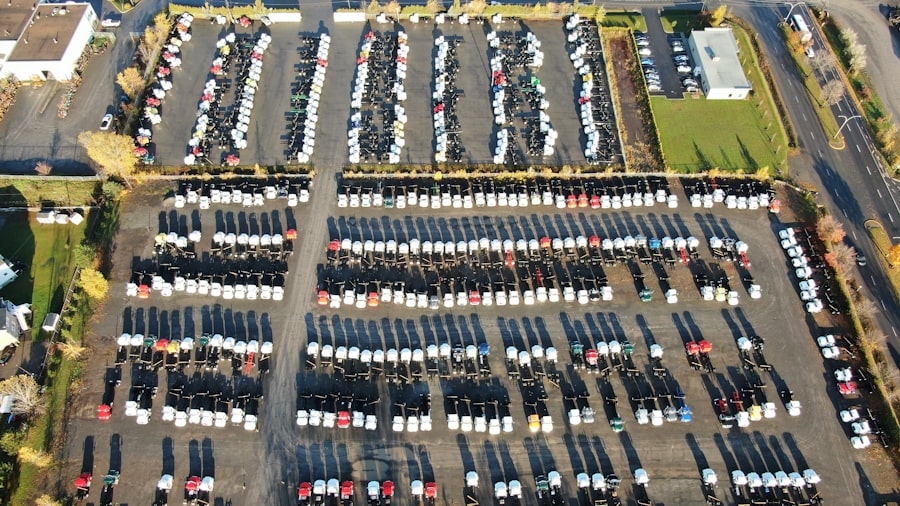The automotive industry stands on the brink of a transformative era, one that promises to redefine the very essence of transportation. As we venture deeper into the 21st century, the convergence of technology, environmental consciousness, and consumer demand is steering the future of automobiles toward unprecedented innovations. The traditional internal combustion engine is gradually being overshadowed by a wave of advancements that prioritize sustainability, safety, and connectivity.
This evolution is not merely a trend; it represents a fundamental shift in how we perceive mobility and its role in our daily lives. As urbanization accelerates and populations swell, the need for efficient, eco-friendly transportation solutions becomes increasingly urgent. The future of automobiles is not just about enhancing performance or luxury; it is about creating a holistic ecosystem that addresses pressing global challenges such as climate change, traffic congestion, and urban air quality.
With governments and industries worldwide committing to reducing carbon emissions and promoting sustainable practices, the automotive landscape is poised for a radical overhaul. This article delves into the key components shaping the future of automobiles, exploring electric vehicles, autonomous driving, sustainable materials, connectivity, mobility services, and the impact of cutting-edge technologies like 5G and artificial intelligence.
Key Takeaways
- The future of automobiles is rapidly evolving with advancements in electric vehicles, autonomous driving, sustainable materials, connectivity, and mobility services.
- Electric vehicles are the next frontier in the automotive industry, offering a sustainable and environmentally friendly alternative to traditional gasoline-powered cars.
- Autonomous driving technology is changing the way we travel, with the potential to improve safety, reduce traffic congestion, and increase mobility for people with disabilities.
- Sustainable materials and manufacturing processes are becoming increasingly important in the automotive industry, as companies strive to reduce their environmental impact and carbon footprint.
- Connectivity and smart features in vehicles are enhancing the driving experience, with innovations such as in-car infotainment systems, advanced driver assistance systems, and vehicle-to-vehicle communication.
Electric Vehicles: The Next Frontier
Electric vehicles (EVs) are at the forefront of this automotive revolution, representing a significant departure from traditional gasoline-powered cars. The shift towards electrification is driven by a combination of technological advancements, regulatory pressures, and changing consumer preferences. Major automakers are investing heavily in EV technology, with companies like Tesla leading the charge by demonstrating that electric cars can offer performance and range comparable to their gasoline counterparts.
The growing availability of charging infrastructure is also alleviating range anxiety, making EVs a more viable option for consumers. The environmental benefits of electric vehicles are substantial. By eliminating tailpipe emissions, EVs contribute to improved air quality in urban areas and help mitigate climate change by reducing greenhouse gas emissions.
Furthermore, advancements in battery technology are making electric vehicles more accessible and affordable. The development of solid-state batteries promises to enhance energy density and reduce charging times significantly. As battery costs continue to decline, it is projected that EVs will become increasingly competitive with traditional vehicles in terms of price, further accelerating their adoption.
Autonomous Driving: Changing the Way We Travel

The advent of autonomous driving technology heralds a new chapter in personal and public transportation. Self-driving cars have the potential to revolutionize how we navigate our roads, offering increased safety, efficiency, and convenience. Companies like Waymo and Cruise are at the forefront of developing autonomous vehicle systems that utilize advanced sensors, machine learning algorithms, and real-time data processing to navigate complex environments without human intervention.
These vehicles promise to reduce accidents caused by human error, which accounts for a significant percentage of road fatalities. Moreover, autonomous driving could reshape urban planning and infrastructure. With the potential for shared autonomous fleets, cities may see a decrease in the need for parking spaces as vehicles can drop off passengers and park themselves in less congested areas.
This shift could lead to more green spaces and pedestrian-friendly environments as urban planners reimagine city layouts. However, the transition to fully autonomous vehicles will require addressing regulatory challenges, public acceptance, and ethical considerations surrounding decision-making algorithms in critical situations.
Sustainable Materials and Manufacturing
| Metrics | Data |
|---|---|
| Recycled Content | 50% |
| Energy Consumption | 20 kWh per unit |
| Water Usage | 5 liters per unit |
| Carbon Emissions | 10 kg CO2 per unit |
As the automotive industry pivots towards sustainability, the materials used in vehicle production are undergoing significant changes. Traditional materials like steel and plastic are being supplemented or replaced with more sustainable alternatives that reduce environmental impact. For instance, manufacturers are increasingly exploring bio-based plastics derived from renewable resources such as corn or sugarcane.
These materials not only lower carbon footprints but also offer comparable performance characteristics to conventional plastics. Additionally, the manufacturing processes themselves are evolving to minimize waste and energy consumption. Techniques such as additive manufacturing (3D printing) allow for more efficient production methods that can reduce material waste significantly.
Companies are also investing in closed-loop recycling systems that enable them to reclaim materials from end-of-life vehicles for reuse in new models. This circular economy approach not only conserves resources but also aligns with global sustainability goals by reducing landfill waste and promoting responsible consumption.
Connectivity and Smart Features in Vehicles
The integration of connectivity into automobiles has transformed them into sophisticated mobile devices on wheels. Modern vehicles are equipped with advanced infotainment systems that provide drivers with real-time information about traffic conditions, navigation assistance, and entertainment options. Features such as smartphone integration through Apple CarPlay and Android Auto allow drivers to access their favorite apps seamlessly while on the road.
Moreover, vehicle-to-everything (V2X) communication is emerging as a critical component of connected cars. This technology enables vehicles to communicate with each other and with infrastructure elements like traffic lights and road signs. By sharing information about traffic patterns and potential hazards, V2X communication can enhance safety and optimize traffic flow.
As connectivity continues to evolve, we can expect even more innovative features that enhance the driving experience while prioritizing safety and convenience.
The Rise of Mobility Services

The concept of mobility is expanding beyond personal vehicle ownership to encompass a range of services designed to meet diverse transportation needs. Ride-sharing platforms like Uber and Lyft have already disrupted traditional taxi services by offering convenient alternatives for urban commuters. However, this trend is evolving further with the rise of Mobility as a Service (MaaS), which integrates various transportation modes into a single accessible platform.
MaaS allows users to plan, book, and pay for multiple forms of transportation—such as buses, trains, bikes, and ride-sharing services—through a single application. This holistic approach encourages users to opt for public transit or shared mobility options instead of relying solely on personal vehicles. As cities grapple with congestion and pollution challenges, MaaS presents an opportunity to create more efficient transportation networks that prioritize sustainability while enhancing accessibility for all residents.
The Impact of 5G Technology on Automobiles
The rollout of 5G technology is set to revolutionize the automotive landscape by enabling faster data transmission and lower latency communication between vehicles and infrastructure. This enhanced connectivity will facilitate real-time data exchange essential for autonomous driving systems and connected vehicle features. For instance, 5G networks can support high-definition mapping updates that allow self-driving cars to navigate complex environments with greater accuracy.
Furthermore, 5G technology will enhance vehicle-to-vehicle (V2V) communication capabilities, allowing cars to share information about road conditions, traffic patterns, and potential hazards instantaneously. This level of connectivity can significantly improve safety by enabling vehicles to react more quickly to changing circumstances on the road. As 5G networks become more widespread, we can expect a surge in innovative applications that leverage this technology to create safer and more efficient transportation systems.
The Role of Artificial Intelligence in Automobile Innovation
Artificial intelligence (AI) is playing an increasingly pivotal role in shaping the future of automobiles across various domains. From enhancing safety features through advanced driver-assistance systems (ADAS) to optimizing manufacturing processes, AI technologies are driving innovation at every level of the automotive industry. Machine learning algorithms enable vehicles to learn from vast amounts of data collected from sensors and cameras, improving their ability to recognize objects, predict behaviors, and make informed decisions on the road.
In addition to safety applications, AI is also transforming customer experiences within vehicles. Personalization features powered by AI can analyze driver preferences and habits to offer tailored recommendations for navigation routes or entertainment options. Moreover, AI-driven predictive maintenance systems can monitor vehicle health in real-time, alerting drivers to potential issues before they escalate into costly repairs.
As AI continues to evolve, its integration into automobiles will unlock new possibilities for enhancing safety, efficiency, and user satisfaction in ways previously unimaginable. The future of automobiles is an exciting tapestry woven from technological advancements that promise to reshape our relationship with mobility. As electric vehicles gain traction and autonomous driving becomes a reality, we find ourselves on the cusp of a new era characterized by sustainability, connectivity, and innovation.
The automotive landscape is not merely changing; it is evolving into a dynamic ecosystem that prioritizes environmental stewardship while enhancing the overall travel experience for individuals around the globe.



